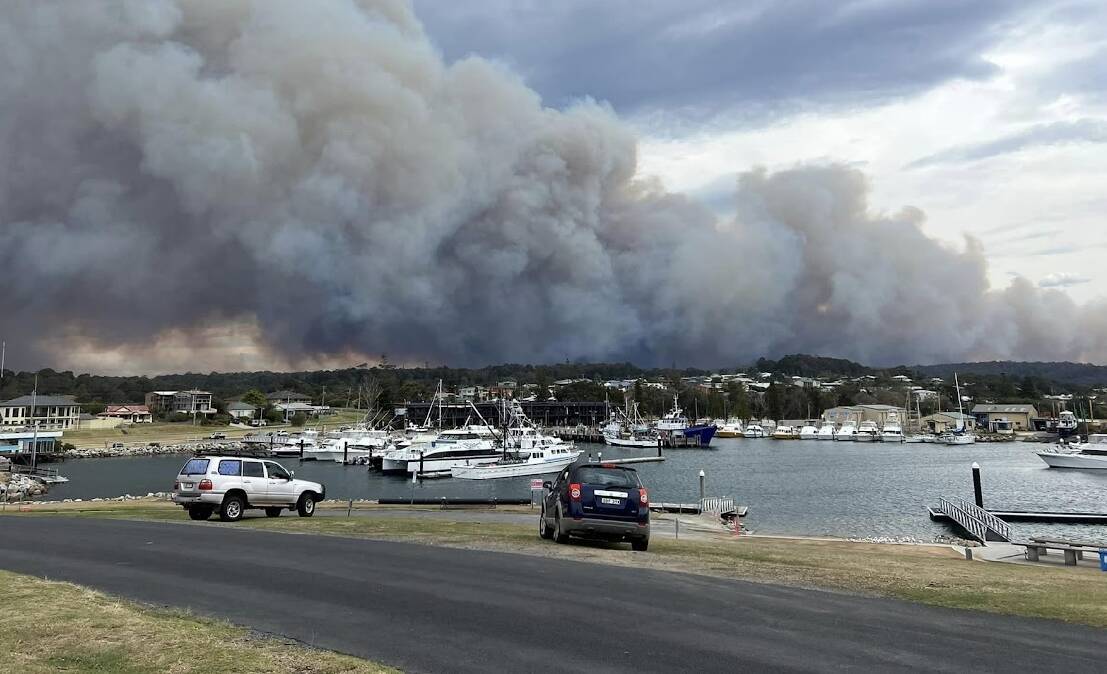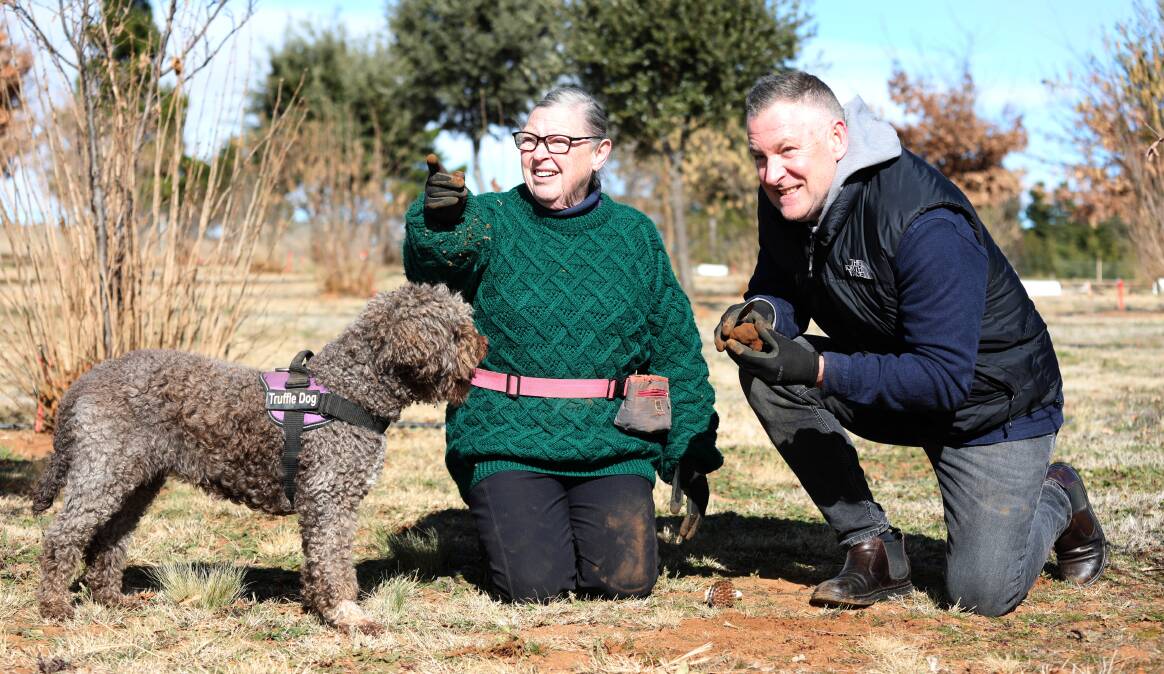An early blowtorch has been applied to the long, difficult bushfire season ahead as numerous blazes burnt out of control through the local region on Tuesday, from Bermagui on the South Coast, to Bredbo and Shannons Flat south of the ACT.
On Wednesday morning, a NSW Rural Fire Service spokesperson said several homes had been lost in the Coolagolite Road bushfire affecting areas like Cuttagee, Murrah, and Baragga Bay. Details of how many homes have been burnt down, and where, are still emerging.
"We don't have many more details than that until our building impact assessment teams can get on the high ground and assess exactly what's been lost," the spokesperson said.
In a grim reminder of the catastrophic fires which devastated their small country town on New Year's Eve 2019, residents of Cobargo were again placed on emergency warning on Tuesday as a blaze emerged off Coolagolite Road in the Bega Valley, between Cobargo and the coast.
By late Tuesday afternoon, the fire had taken down power lines across Westropps Road, about 2.5kms from the town and the Cobargo to Bergamui Road was closed to all but emergency traffic as a precaution to prevent people entering the fireground.

Strong north-westerly winds had fanned the Coolagolite bushfire, sending the blaze toward Bermagui during the height of the busy school holiday season, with thousands of visitors at the South Coast.
Peak wind gusts in the area had reached 100kmh, sending spot fires leaping into the nearby Biamangra National Park, which had been extensively burnt during the Black Summer of 2019-20.
Rapid escalation
Smoke from the oncoming fires could be seen from Wallaga Lake to Bermagui, south to Cuttagee and at Barragga Bay, where a separate small grass fire had ignited around 4pm.
Marty Webster, from the Bega Valley Incident Management Team, said that the Coolagolite fire had escalated rapidly on Tuesday.
"There has been a lot of spotting behaviour associated with the strong winds," he said.
"The fire progressed down towards Cuttagee and Barragga Bay and we believe that grass fire at Barragga Bay is spotting from that main fire."
He said that NSW National Parks had closed and cleared all campgrounds in the area. Evacuation centres for any displaced people were being set up at Narooma and Bega.
He said that smoke drift into that coastal area had been evident from late morning on Tuesday, and some people had elected to leave.
Fuel loads within the Biamangra National Park in the direct path of the bushfire were fortunately low, a legacy of the Black Summer conflagration three years ago.
"It's really been a weather-driven fire, rather than a fuel-driven fire," he said. "We are not aware of any property losses at this stage. The crews on the ground have gone an amazing job."
Weather could provide relief
A southerly was due to hit in the early hours of Wednesday morning.
"We're certainly looking forward to that southerly and the forecast suggests it will arrive in a fairly gentle fashion, which is what we need," he said.
"Sometimes those southerly changes can cause as many headaches as they solve.
"And there is some rain with it, which will bring a lot of relief for the fire crews."
Across the Great Dividing Range near Bredbo, both bushfires which emerged on the weekend on either side of the Monaro Highway near Bredbo were burning out of control on Tuesday afternoon.
Strong north-westerly winds had prevented aircraft from attacking the fires, although late on Tuesday the NSW Rural Fire Service reported it would be sending up an aircraft for a fireground reconnaisance.
Mitchell Butler, from the NSW RFS, said that while the fires in the Bredbo area had grown significantly in the past few days, an incoming cold front appeared likely to bring some good, soaking rain.
"At Shannons Flat there are about 10 crews on the ground, as well as heavy plant cutting containment lines but we are looking at that major weather front arriving overnight on Tuesday and with it, a good chance of rain," he said.
"So while both of those fires around Bredbo are burning out of control, we feel reasonably confident that the change in weather will work in our favour."
A close escape
The Cappanana Rd fire which started on Sunday had threatened one of the region's most famous truffle farms, Macenmist, east of Bredbo.
Barbara Hill had watched the fire approach her farm from the north during the day. During the Black Summer her well-protected property, with its gravity-fed tanks and rooftop water sprinkler system, had served as an evacuation centre.
Not far from her property is Peak View which lost an enormous amount of native bush and koala habitat. Peak View was also where the huge Lochheed firefighting air tanker crashed, killing all three on board.

However, this time the bushfire approached and swept around her and several neighbouring properties, largely as a result of having no fuel on the ground.
"It [the bushfire] came in from the north on the weekend and was all over the show, jumping around us," she said.
"Luckily we had ploughed up some fields and put seed down over the winter so there was nothing much on the ground to burn. We lost some radiata pines and native bush around us so it was touch and go for a while."
Meanwhile, an enormous effort by RFS crews near Mudgee had brought two fires, one on Trilby Lane at Beryl north of Gulgong and on Henry Lawson Drive north of Mudgee, under control.






